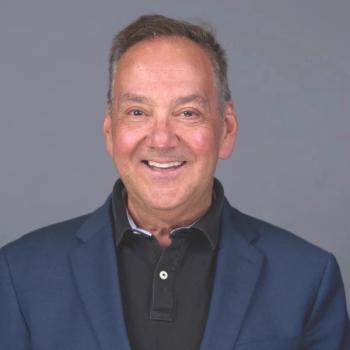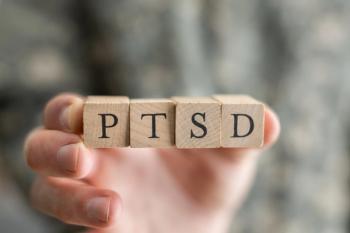
- Vol 32 No 11
- Volume 32
- Issue 11
When the Psychiatrist Has PTSD
For PTSD in psychiatrists and other mental health care providers to be addressed, a major shift in medical culture and thinking is needed.
Dr John Bradford of Ottawa, Canada, had a long, successful career as a forensic psychiatrist, spanning several decades. Bradford’s extensive experience with brutal people, such as sexual sadists and killers, led him to believe that he was resilient to trauma. The years of work, however, may have taken their toll. After watching highly disturbing video evidence of 2 women being assaulted as part of a high-profile case, Bradford began drinking excessively, and
[[{"type":"media","view_mode":"media_crop","fid":"28795","attributes":{"alt":"","class":"media-image media-image-right","height":"156","id":"media_crop_4141830503460","media_crop_h":"0","media_crop_image_style":"-1","media_crop_instance":"4793","media_crop_rotate":"0","media_crop_scale_h":"0","media_crop_scale_w":"0","media_crop_w":"0","media_crop_x":"0","media_crop_y":"0","style":"float: right;","title":" ","typeof":"foaf:Image","width":"169"}}]]Ironically, mental health care providers may readily encourage their patients to confront psychiatric issues, but they are not always as willing to identify and address these problems in themselves, despite the frequent occurrence of PTSD in physicians. The lifetime prevalence of PTSD is between 8% and 9% in the general population, but is higher in physicians. For example, PTSD rates in physicians exposed to war range between 11% and 18% and are about 12% in those who practice
PTSD can strike at any professional stage, from the experienced psychiatrist such as Dr John Bradford, to physicians in training. In his talk at the APA meeting, Myers presented data from several studies that focused on medical students and PTSD. The hazing and overworking of medical students is a tradition that continues, possibly with the notion that extremely difficult conditions will prepare students for a doctor’s life. The practice may however come with a cost. According to
Myers cautioned that residents may experience PTSD because they are not psychologically prepared for the traumatic events they might witness.5 He discussed several clinical situations that could be disturbing to physicians in training, including observing severe injuries, treating battered infants, seeing amputations, or observing death in a young, healthy-seeming individual. Even being put-down and humiliated by a senior physician might trigger PTSD, something for traditionalists who think students need “toughening up” to consider.
According to Myers, circumstances that may precipitate PTSD include not only medical training but also traumatic events that took place before medical school. For example, immigrants who left war-torn countries or physicians who are specifically training to deal with traumatic situations may be vulnerable; military psychiatrists also may be particularly susceptible.
Adding to the list of those at risk provided by Myers, Dr Arthur Lazarus has identified several
• Emergency physicians
• Physicians practicing in remote areas with limited medical services
• Physicians involved in malpractice litigation
• “Second victims,” physicians who are exposed to trauma via their patients
Certainly psychiatrists would fall under the last category and may be members of the other categories as well. Understanding who is at risk can help predict and assess symptoms of PTSD in susceptible individuals.
Identification is of course the first step; however, treatment is crucial for improvement in the lives of the individual psychiatrists, as well as for those they affect professionally and personally. But if PTSD in psychiatrists is so deeply buried because of denial and a lack of social acceptance, what can be done about this problem?
Myers suggests several tactics. First, the culture of medicine needs to change. Physicians in training can be better prepared for possibly upsetting situations through debriefing, normalizing, and learning to accept the events. New institutional attitudes are needed, specifically encouraging physicians with PTSD symptoms to come forward and seek help early. The stigma and belief system that views physicians as being bulletproof to PTSD needs to change. Finally, coworkers should realize that some physicians will live chronically with residual symptoms. Again, acceptance is a key to improving the situation.
For the psychiatrist treating a colleague with possible PTSD, Myers recommends getting buy-in as a first start: for example, “see whether your patient is in agreement” when suggesting possible PTSD, and ask how the symptoms are affecting that person’s ability to work. Reassurance that treatment is effective can be helpful, as well as noting that help through therapy or medication will positively affect the psychiatrist’s professional and personal life.
But what if you are the psychiatrist or mental health care
Recognition naturally needs to be followed by treatment, including a complete assessment of PTSD symptoms as well as of comorbid symptoms. PTSD treatment may include medication, individual cognitive-behavioral therapy, and group therapy as needed. However, care does not stop at the individual with PTSD symptoms, since treatment of the family and marital therapy can also help. Balint groups-the presentation of clinical cases among physicians-help prepare people working together to deal with PTSD in psychiatrists specifically. Myers encourages the psychiatrist to “be an advocate and change maker.”
Indeed, for PTSD in psychiatrists and other mental health care providers to finally be addressed, a major shift in medical culture and thinking is needed. Psychiatrists will hopefully learn to recognize signs of PTSD in their colleagues and also in themselves. The condition exists in psychiatrists and may even be common, and it needs to be treated.
References:
1. Cobb C. “Tough forensic guy” John Bradford opens up about his PTSD. Ottawa Citizen. November 2013.
2. Wilberforce N, Wilberforce K, Aubrey-Bassler FK. Post-traumatic stress disorder in physicians from an underserviced area. Fam Pract. 2010;27:339-343.
3. Heru A, Gagne G, Strong D. Medical student mistreatment results in symptoms of posttraumatic stress. Acad Psychiatry. 2009;33:302-306.
4. Klamen DL, Grossman LS, Kopacz D. Posttraumatic stress disorder symptoms in resident physicians related to their internship. Acad Psychiatry. 1995;19:142-149.
5. Myers MF. The support and welfare of the student. In: Gask L, Coskun B, Baron D, eds. Teaching Psychiatry. London: John Wiley & Sons; 2011:235.
6. Lazarus A. Traumatized by practice: PTSD in physicians. J Med Pract Manage. 2014;30:131-134.
Articles in this issue
about 10 years ago
Consent in Psychiatric Emergencies: What Clinicians Need to Knowabout 10 years ago
Interviewing in the Emergency Settingabout 10 years ago
Medication-Assisted Treatment and Drug Courtsabout 10 years ago
A Psychiatrist’s Dietabout 10 years ago
Managing the Suicidal College Student: Advice for Community Providersabout 10 years ago
How to Protect Patient Informationabout 10 years ago
Fraud, Waste, and Excess ProfitsNewsletter
Receive trusted psychiatric news, expert analysis, and clinical insights — subscribe today to support your practice and your patients.











